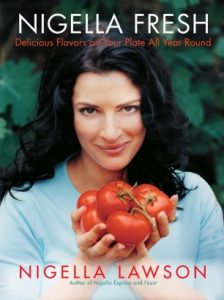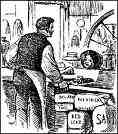Every year for Christmas Dani and I buy a couple of cookbooks for each other. Maybe it’s from a chef at a restaurant we’ve been to. Or someone we’ve seen on Top Chef. Yeah, thousands of recipes are available on the Internets but the books become something we keep going back to.
According to the LA Times, we’re not alone.
Ten Speed will have published at least 30 books in the food and spirits category by the end of 2016; Phaidon will have released 20 titles. Culinary dynamo Ina Garten’s latest “Cooking for Jeffrey: A Barefoot Contessa Cookbook” is currently holding the No. 8 spot in all categories on Amazon.
Print isn’t totally dead.
Since folks still go to these books for ideas, instructions and information on what and how to cook, extension associate Katrina Levine and I (with the stats help of Ashley Chaifetz) decided to go look at the type of food safety info is in the books. Katrina looked at the New York Times best seller lists for food and diet from Sept 2013-Jan 2014 and evaluated the food safety messages in over 1700 recipes. Some of the stuff she found was that although there are a lot of recipes that could benefit from instructions about safe endpoint temperatures only about 8 percent mentioned a specific temperature. And just under three quarters of those recipes even had the science-based temperature.
Lots of other insights, the paper was published as an early cite late last week and will be in an upcoming special issue of the British Food Journal. The abstract is below:
Evaluating food safety risk messages in popular cookbooks
British Food Journal, Volume 119, Issue 5 2017
Katrina Levine , Ashley Chaifetz , Benjamin Chapman
Abstract
Purpose
Medeiros et al. (2001) estimate 3.5 million cases of foodborne illness in the U.S. annually are associated with inadequate cooking of animal foods or cross-contamination from these foods. Past research shows home food handling practices can be risk factors for foodborne illness. The purpose of this study was to evaluate the communication of food safety guidance, specifically safe endpoint temperatures and cross-contamination risk reduction practices, in popular cookbook recipes.
Design/methodology/approach
Recipes containing raw animal ingredients in 29 popular cookbooks were evaluated through content analysis for messages related to safe endpoint temperature recommendations and reducing cross-contamination risks.
Findings
Of 1,749 recipes meeting study criteria of cooking raw animal ingredients, 1,497 contained a raw animal that could effectively be measured with a digital thermometer. Only 123 (8.2%) of these recipes included an endpoint temperature, of which 89 (72.3%) gave a correct temperature. Neutral and positive food safety behavior messages were provided in just 7.2% (n=126) and 5.1% (n=90) of recipes, respectively. When endpoint temperatures were not included, authors often provided subjective and risky recommendations.
Research limitations/implications
Further research is needed on the effect of these results on consumer behavior and to develop interventions for writing recipes with better food safety guidance.
Practical implications
Including correct food safety guidance in cookbooks may increase the potential of reducing the risk of foodborne illness.
Originality/value
Popular cookbooks are an underutilized avenue for communicating safe food handling practices and currently cookbook authors are risk amplifiers.

